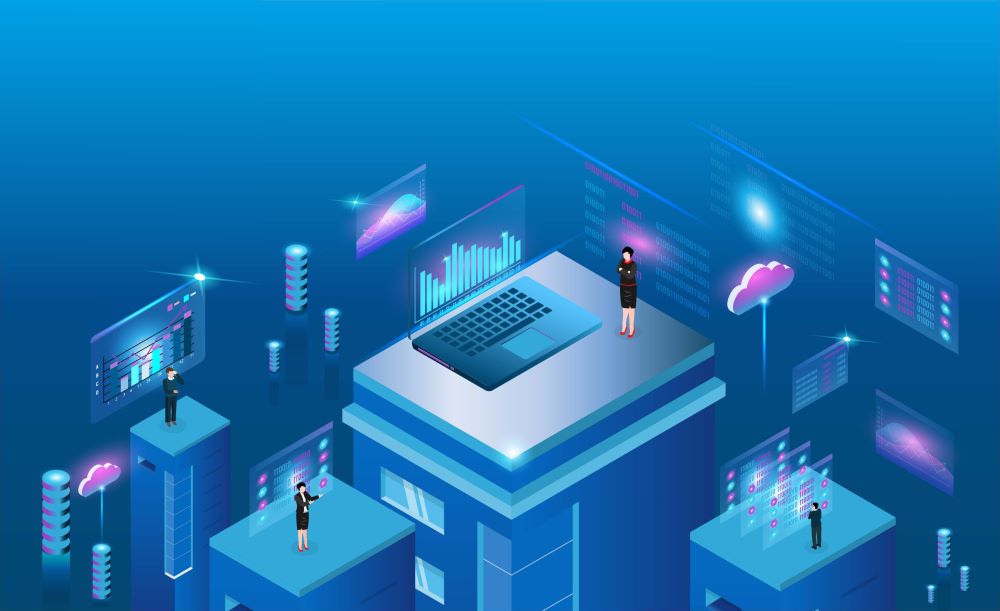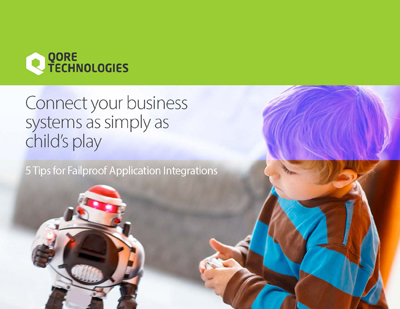Solving the challenges of integrating IoT with Enterprise IT
IoT (Internet of Things) technologies and integrations have significantly transformed workplaces across various industries by enabling smarter, more connected, and more efficient operations. And it isn’t slowing down anytime soon. According to Mordor Intelligence, the IoT technology market value is expected to rise to $1.39 trillion by 2026. With all of this innovation, however, comes both challenges and opportunities, especially when it comes to integrating IoT with enterprise IT systems, such as Customer Relationship Management (CRM) and Enterprise Resource Planning (ERP) platforms.
Connectivity Drives Seamless System Integration
As the IoT landscape expands, the number and variety of connected devices also increase. From smart thermostats and wearable fitness trackers to industrial sensors and autonomous vehicles, these devices run on different platforms and store and transfer data differently. This diversity often leads to the creation of data silos, fragmented experiences, and operational inefficiencies if not handled appropriately. The linchpin in overcoming these challenges is effective systems integration.
Proper integration of IoT and enterprise IT integration involves designing, implementing, and managing the connections between disparate devices and platforms, ensuring that they function harmoniously as a unified ecosystem. Successful integration enables seamless data exchange, real-time communication, and coordinated actions between devices, enhancing efficiency and improving user experiences.
Integrating IoT with IT Systems: The Technical Challenges
However, despite this kind of seamless integration being the solution, integrating IoT with enterprise IT systems poses formidable technical challenges.
This technical complexity arises from several key factors:
Data Format Variability: IoT devices generate data in various formats, including structured and unstructured data. This diversity makes ensuring smooth data ingestion, transformation, and processing within back-office systems challenging
Protocol Heterogeneity: IoT devices employ different communication protocols (e.g., MQTT, CoAP, HTTP) for data transmission. Back-office systems must accommodate these protocols, necessitating additional layers for protocol conversion and data exchange.
Data Volume and Velocity: IoT systems produce massive data volumes at high velocities. Back-office systems may struggle to efficiently handle this influx of real-time data, potentially leading to performance bottlenecks and data loss.
Security Demands: Establishing end-to-end security in IoT-back-office integrations is imperative. IoT data must undergo encryption and robust access control measures to protect sensitive information. Achieving this level of security across the integration pipeline is technically intricate.
Scalability Challenges: IoT deployments can rapidly expand with the addition of new devices and data sources. Back-office systems must be designed to seamlessly scale to accommodate this growth, which can pose technical challenges.
Legacy System Compatibility: Many enterprises use legacy back-office systems that may lack modern APIs or capabilities for easy IoT integration. Retrofitting these systems to handle IoT data can be technically complex.
Real-Time Requirements: IoT often necessitates real-time or near-real-time data processing and responses. Back-office systems that rely on batch-oriented architectures may require significant technical modifications to support real-time data processing.
Data Quality Management: IoT data may exhibit issues such as noise, incompleteness, or inconsistency. Back-office systems must incorporate mechanisms to address data quality concerns, including cleansing, validation, and transformation processes.
Four Tenets to Consider in IoT to Enterprise IT Integration
Here are four tenets your organization should consider when evaluating integration services providers to connect your existing IT systems and new IoT infrastructure.
Interoperability: Achieving effective communication between various IoT devices and platforms is a foundational aspect of successful integration, but many IaaS platforms overcomplicate this process. Embracing open standards, configurable building block technologies, and Transaction-Sure Automation can enhance compatibility and flexibility while reducing the risks of vendor lock-in.
Security: Just like any other business system, IoT device security is paramount. Integrated IoT solutions must prioritize end-to-end encryption, robust authentication mechanisms, and stringent access controls. Regular security audits and updates are vital to protect against potential vulnerabilities and breaches.
Scalability: IoT deployments can vary significantly in scale, from small-scale smart homes to large-scale industrial operations. System integration should be designed with scalability in mind, allowing for the seamless addition of new devices and services without disrupting existing infrastructure. No-code microservices integration platforms offer the necessary scalability for growing IoT infrastructures.
Data Management: The massive volume of data generated by IoT devices presents both challenges and opportunities. Effective data management encompasses data collection, storage, processing, and analysis. Integrating data from diverse sources empowers organizations to derive valuable insights, make informed decisions, and drive innovation.

Real-World Use Cases Highlighting IoT-Enterprise IT Integration
Now that we’ve uncovered what’s needed for successful IoT integrations let’s look at the areas where this can play out in the real world.
Customer Relationship Management (CRM): There are many ways IoT implementation and system integration can improve customer relationship management, the cornerstone of every successful business. First is self-service. Current self-service approaches often prove cumbersome for prospects and customers, who prefer human interaction over navigating manual options like phone trees. IoT-acquired data can detect product malfunctions before customers realize them, leading to personalized self-service solutions that address immediate needs effectively.
A second use case is dynamic pricing. IoT integrations can provide real-time data streams to gauge demand across market segments, enabling immediate product price adjustments to increase sales revenue. This agility in pricing, especially with price-sensitive consumers, provides a competitive edge.
Furthermore, IoT augments CRM by offering rich consumer behavior insights, enabling tailored interactions and highly targeted marketing for better ROI and improved conversion rates.
Empowered Inventory and Logistics Management: IoT can empower e-commerce businesses and their inventory management through IoT-enabled sensors located on products. Using these sensors, companies can achieve real-time inventory management and data exchange with ERP systems to guide supply and demand planning. In addition, cloud-based technologies such as GPS and RFID offer comprehensive insights into logistics management, encompassing personnel identities, traffic conditions, location, and weather. This enhances the efficiency of shipping and delivery processes while ensuring precise tracking and delivery.
Connected Healthcare: IoT integration has revolutionized patient care through wearable health devices continuously monitoring vital signs. These devices use biosensors to collect data from the patient, such as heart rate, sleep patterns, blood pressure, and activity, and then seamlessly transmit that data to healthcare providers, enabling timely interventions and personalized treatment plans.
Next Steps
The ever-changing IoT landscape demands a strategic approach to system integration. Successful integration bridges the gap between devices, platforms, and data streams, enabling seamless communication and allowing IoT to be a powerhouse for organizations. By seeking expert guidance, organizations can confidently navigate the IoT landscape and embark on a journey of innovation and growth.
Qore Technologies allows organizations to create efficient, high-performance, and easy-to-manage automation for IoT infrastructures using Qorus dynamic process orchestration while protecting sensitive data, employing privacy by design, and enacting data governance through stringent data protection and access controls.
With a deep understanding of interoperability, security, scalability, and data management, Qore helps organizations harness the full potential of IoT technology and its integration with existing business systems.
Contact us today to see how we can help you solve your IoT integration challenges.


